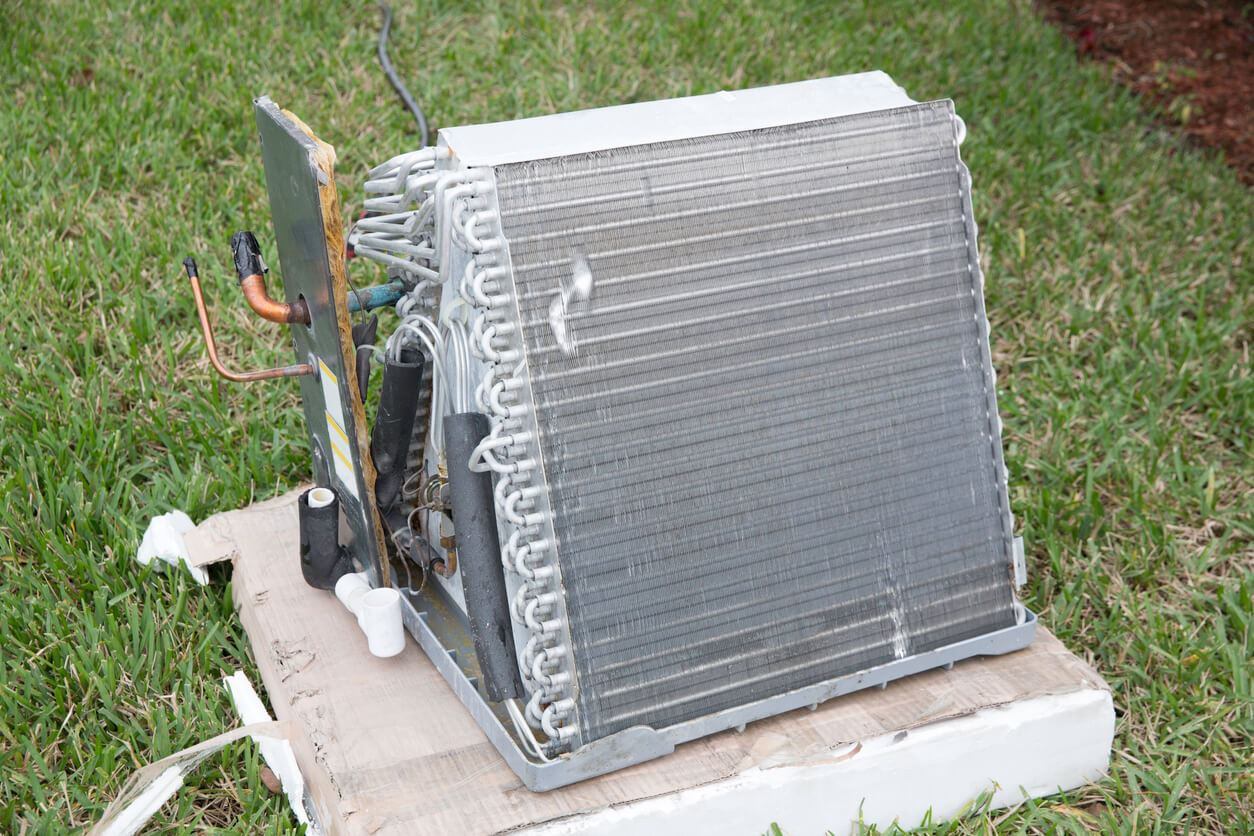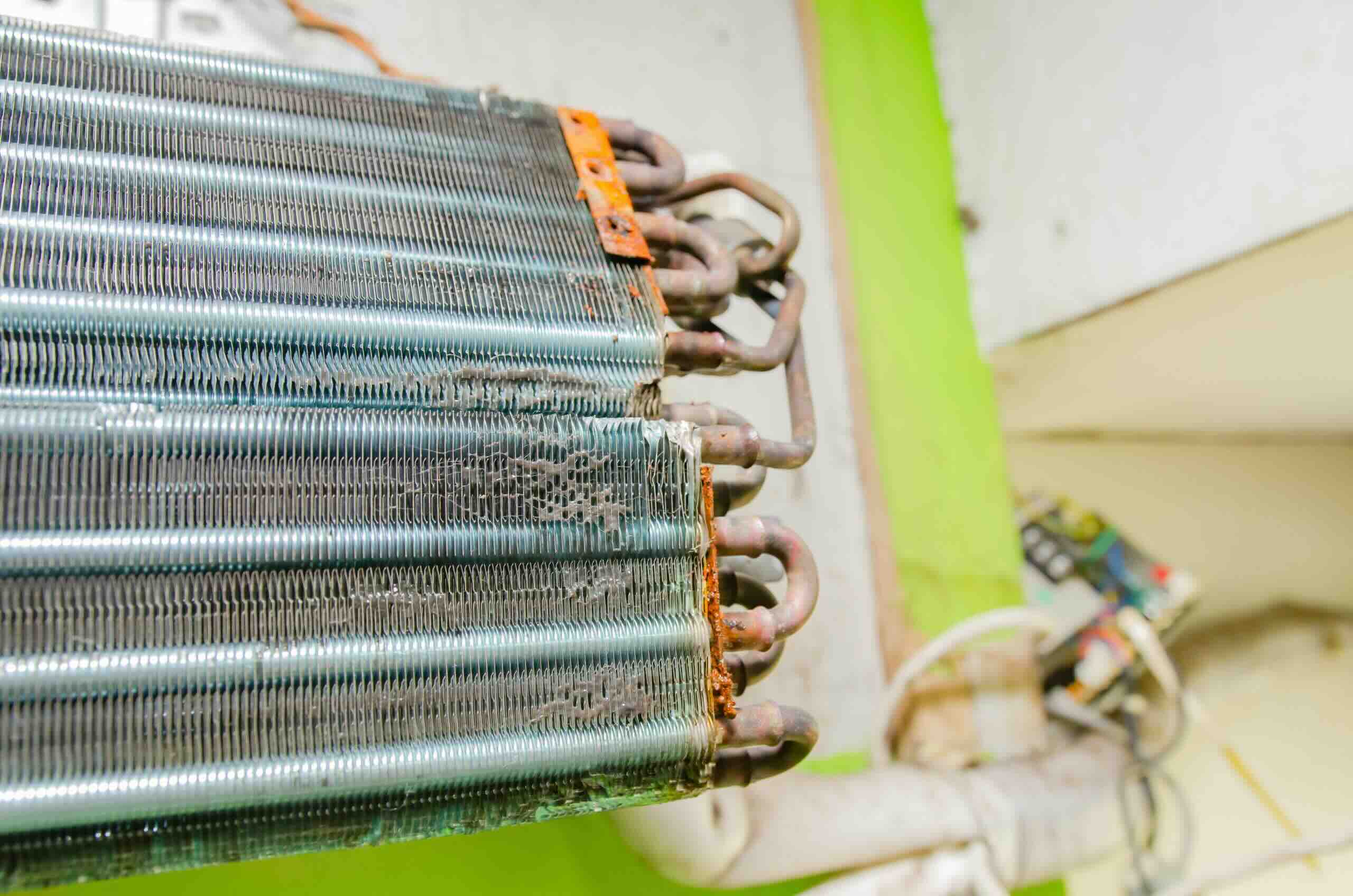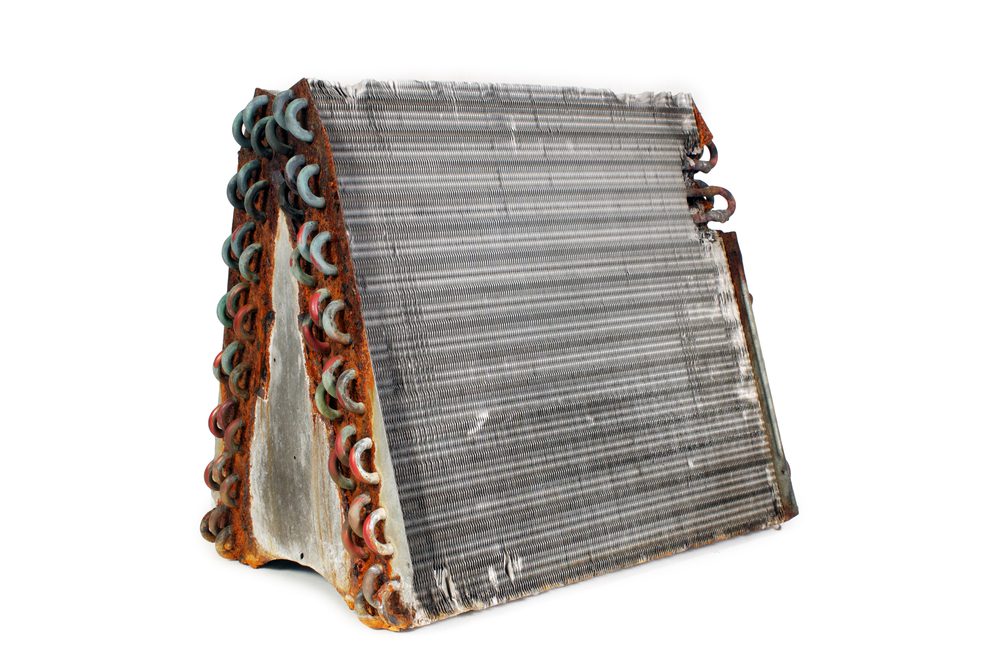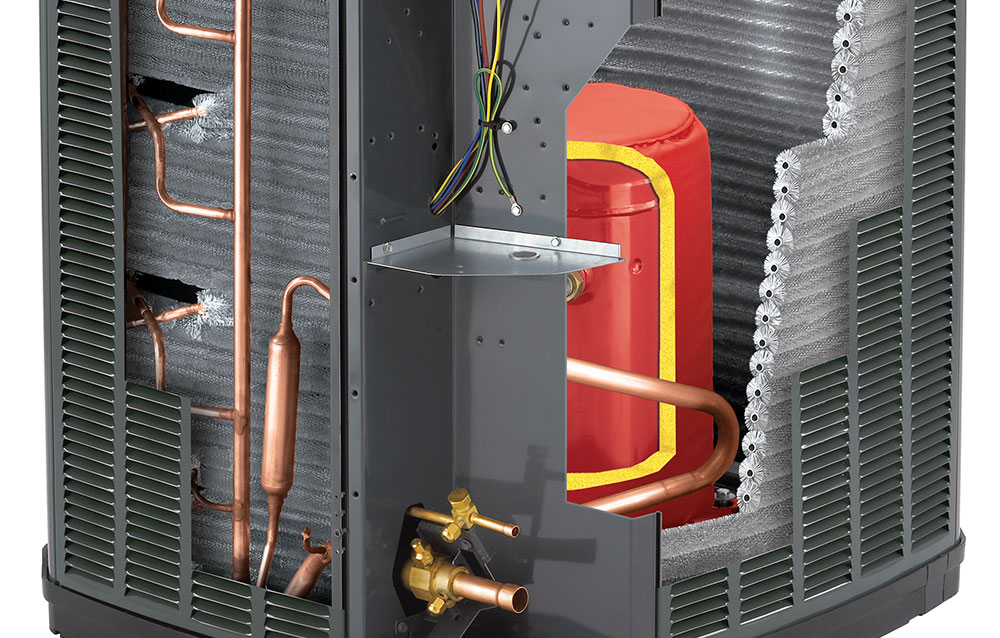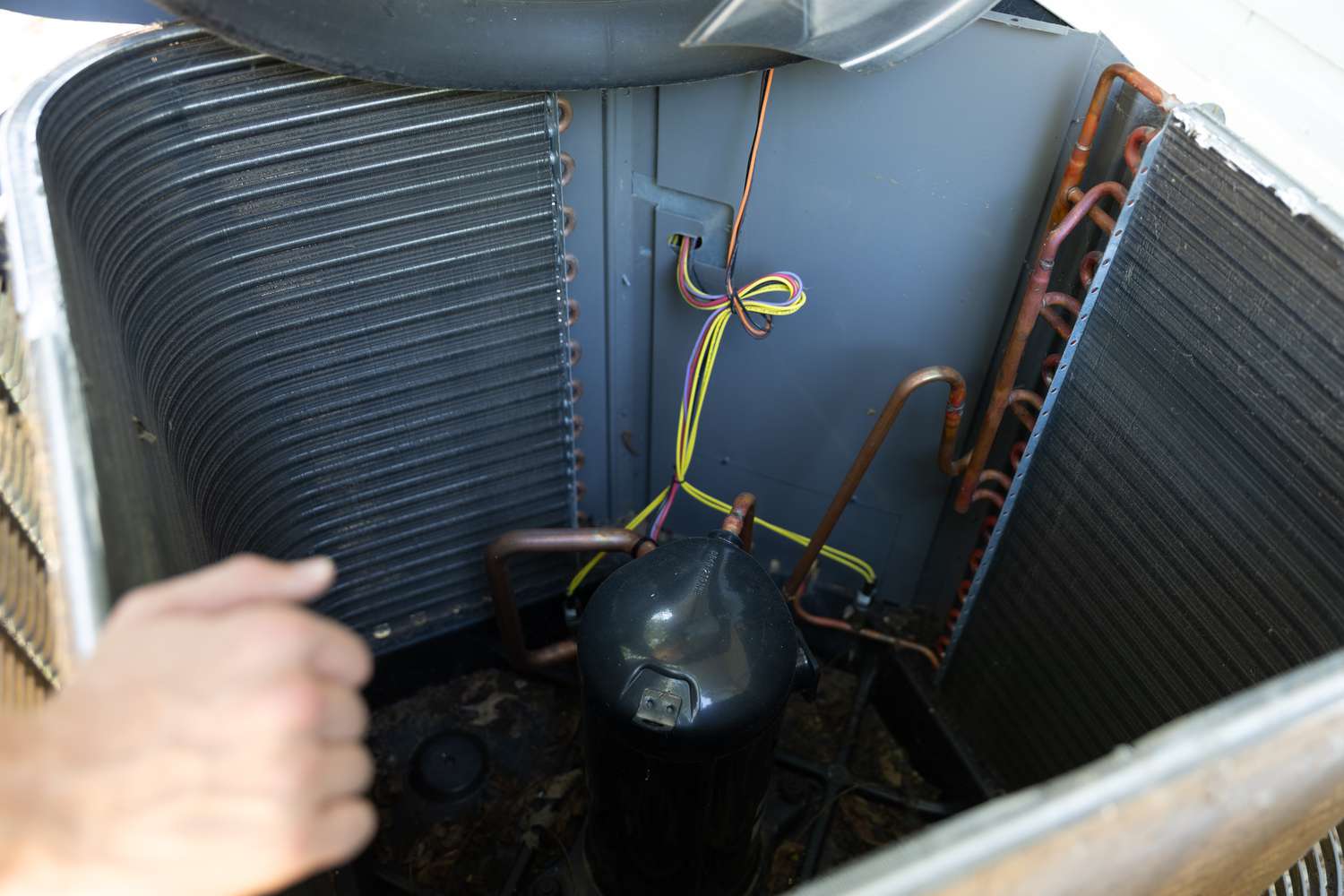What Is The A Coil In An Air Conditioner

One of the most frustrating experiences for a homeowner is when the air conditioner stops blowing cold air, especially during the sweltering heat of summer. While there can be many reasons for this, a common culprit is a problem with the A-coil. Let's demystify this critical component and provide you with some troubleshooting steps you can take before calling in the professionals.
What Exactly *Is* the A-Coil?
The A-coil, also known as the evaporator coil, is a crucial part of your air conditioner's cooling process. It’s typically located inside the indoor air handler unit, the part of your AC system that blows air through your vents. It's called an A-coil because, well, it often resembles an "A" shape (though some are shaped like an "N").
Here’s how it works: Refrigerant, in a liquid form, flows through the A-coil. As warm air from your home is blown across the coil, the refrigerant absorbs the heat. This process causes the refrigerant to evaporate into a gas, cooling the air in the process. The now-cooled air is then circulated back into your home, and the refrigerant returns to the outdoor unit (condenser) to release the heat.
The Common Problem: A Frozen A-Coil
One of the most frequent issues homeowners encounter is a frozen A-coil. You'll know this is happening if you notice reduced airflow, weak cooling, or even ice visibly forming on the indoor unit. The air coming from your vents might be lukewarm or even warm.
But *why* does the A-coil freeze? Several factors can contribute, and we'll explore the most common ones and how you can diagnose them.
Step-by-Step Troubleshooting Guide
Before you begin any troubleshooting, always turn off your air conditioner at the thermostat and the breaker. This is crucial for your safety and to prevent further damage to the system.
Step 1: Check the Air Filter
A dirty air filter is the *number one* cause of a frozen A-coil. A clogged filter restricts airflow, causing the coil to get too cold. Imagine trying to breathe through a straw – not enough air gets through, right? The same thing happens to your AC system.
Diagnosis: Remove the air filter and hold it up to the light. If you can't see through it easily, it's dirty.
DIY Fix: Replace the air filter with a new one of the correct size and MERV rating. It’s a simple and inexpensive fix. You should be replacing your air filter every 1-3 months, depending on the filter type and how often you use your AC.
Step 2: Check for Blocked Return Vents
Similar to a dirty air filter, blocked return vents restrict airflow. Return vents are the large grilles in your walls or ceilings that pull air back into the AC system. If they’re covered by furniture, rugs, or other obstructions, the airflow will be reduced, leading to a frozen coil.
Diagnosis: Visually inspect all return vents in your home. Feel the airflow near each vent; it should be noticeably pulling air in.
DIY Fix: Clear any obstructions blocking the return vents. Ensure furniture is positioned to allow for adequate airflow. Vacuum the vents to remove dust and debris.
Step 3: Check the Blower Fan
The blower fan, located inside the indoor unit, is responsible for circulating air across the A-coil. If the blower fan isn't working correctly, it can lead to insufficient airflow and a frozen coil.
Diagnosis:
- Turn the AC system to "Fan On" mode at the thermostat (this will run only the blower fan).
- Listen carefully to the indoor unit. You should hear the fan running.
- Feel for airflow coming from the supply vents (the vents that blow cold air). If there is minimal or no airflow, the blower fan might be the problem.
DIY Fix: (Proceed with caution and only if comfortable working with electrical components).
- Turn off the power to the AC unit at the breaker.
- Locate the blower fan motor. Consult your system's manual for its exact location.
- Inspect the motor for any obvious signs of damage, such as burnt wires or a broken fan blade.
- Some blower fans have a capacitor that helps start the motor. If you have experience with electrical work, you can check the capacitor with a multimeter to see if it's functioning correctly. *However, capacitors can store a charge even after the power is turned off, so exercise extreme caution and discharge the capacitor before testing*.
When to Call a Professional: If the blower fan motor is damaged, the capacitor is faulty, or you're not comfortable working with electrical components, it's time to call a qualified HVAC technician. Replacing a blower fan motor is typically a job for a professional.
Step 4: Refrigerant Leaks
A refrigerant leak can also cause a frozen A-coil. When the refrigerant level is low, the pressure in the system drops, causing the coil to get excessively cold and freeze. A refrigerant leak requires professional attention as it deals with handling regulated substances.
Diagnosis:
- Look for signs of oil stains near the indoor or outdoor unit. Refrigerant leaks often leave behind an oily residue.
- Listen for a hissing sound near the units. This could indicate refrigerant escaping.
- You may also notice reduced cooling performance even after checking the air filter and airflow.
When to Call a Professional: Do not attempt to handle refrigerant yourself. Refrigerant is a regulated substance, and only licensed HVAC technicians are authorized to handle it. A refrigerant leak requires specialized tools and knowledge to locate and repair the leak, and then recharge the system with the correct amount of refrigerant.
Step 5: Thermostat Issues
While less common, a malfunctioning thermostat can sometimes cause the AC to run constantly, leading to a frozen coil.
Diagnosis:
- Ensure the thermostat is set to the correct temperature and mode (cooling).
- Check the thermostat's batteries (if applicable) and replace them if they're low.
- Observe whether the AC cycles on and off appropriately. If it runs continuously, even when the desired temperature is reached, the thermostat may be faulty.
DIY Fix: Try resetting the thermostat to its factory settings. Consult the thermostat's manual for instructions. If resetting doesn't resolve the issue, consider replacing the thermostat. Smart thermostats can be a great upgrade, offering improved energy efficiency and control.
When to Call a Professional: If you're unsure about replacing the thermostat or if the issue persists after replacement, it's best to consult an HVAC technician.
Thawing a Frozen A-Coil
Once you've identified the cause of the frozen coil and taken steps to address it (e.g., replacing the air filter), you need to thaw the coil. Here's how:
- Turn off the air conditioner at the thermostat and the breaker.
- Set the thermostat to "Fan On" mode. This will circulate air across the coil and help it thaw more quickly.
- You can also use a hairdryer (on a low setting) to gently warm the coil, but be extremely cautious not to get any water near electrical components.
- Allow several hours for the coil to thaw completely.
Important: Do not chip away at the ice with a sharp object, as this could damage the coil.
Preventative Maintenance
The best way to avoid a frozen A-coil and other AC problems is to perform regular maintenance. Here are some key steps:
- Replace the air filter regularly (every 1-3 months).
- Keep return vents clear of obstructions.
- Schedule annual maintenance with a qualified HVAC technician. This includes inspecting and cleaning the coils, checking refrigerant levels, and ensuring all components are functioning correctly.
- Consider a programmable or smart thermostat. This allows you to optimize your AC usage and potentially reduce energy consumption.
When to Call a Professional - A Recap
While some issues with the A-coil can be addressed with simple DIY fixes, there are situations that require the expertise of a qualified HVAC technician. Here’s a quick recap of when to call a professional:
- Refrigerant leak: Handling refrigerant requires specialized tools and certification.
- Blower fan motor problems: Replacing a blower fan motor or diagnosing electrical issues within the motor.
- Coil damage: If you suspect the A-coil itself is damaged, such as a leak or physical damage, call a professional.
- Persistent freezing: If the A-coil continues to freeze even after you've addressed the common causes, there may be a more complex underlying issue.
- You are uncomfortable working with electrical components.
By understanding what the A-coil is, how it works, and the common problems that can affect it, you can take proactive steps to maintain your air conditioning system and potentially save money on costly repairs. Remember to prioritize safety and call a professional when needed. Stay cool!
